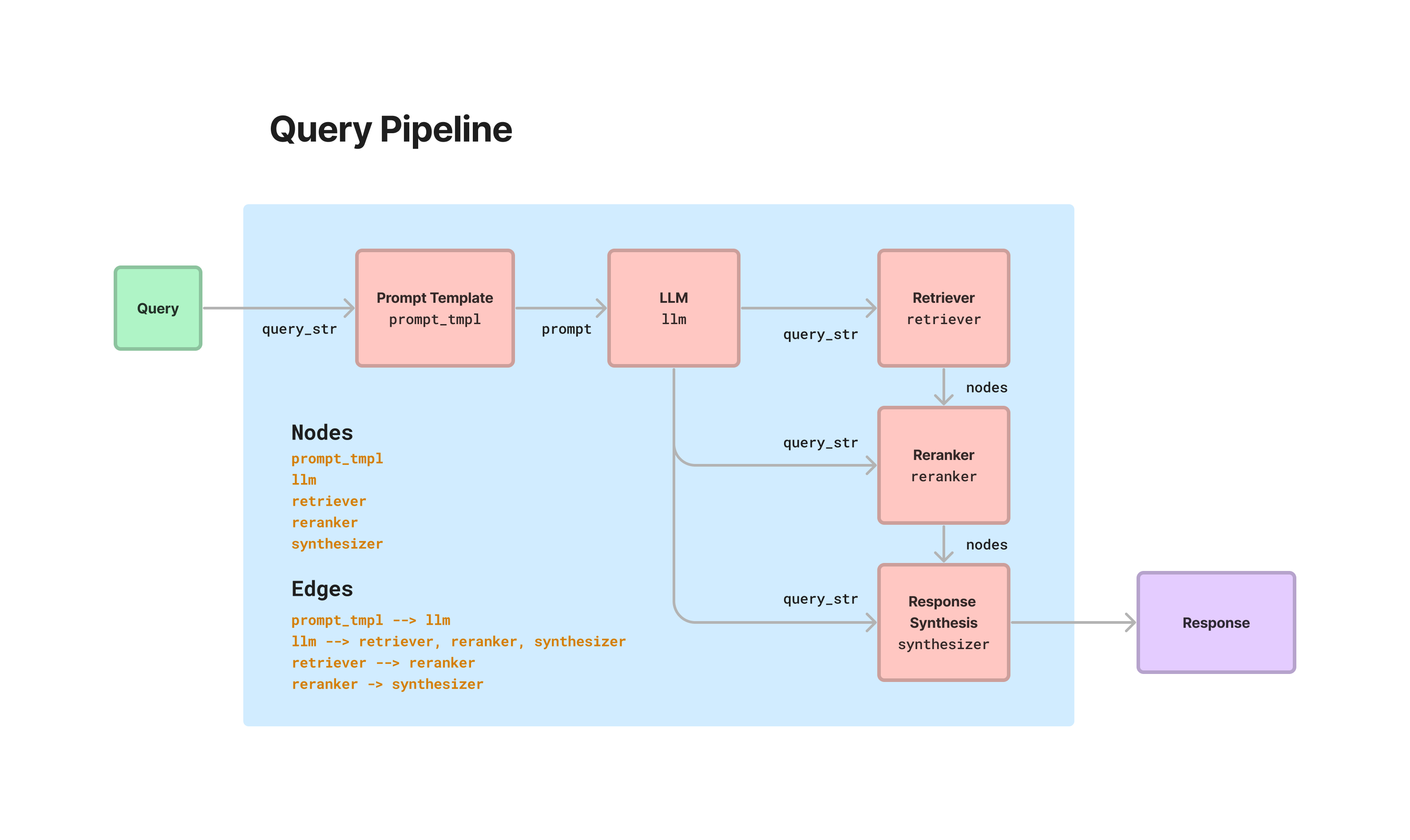Query Pipeline#
Concept#
LlamaIndex provides a declarative query API that allows you to chain together different modules in order to orchestrate simple-to-advanced workflows over your data.
This is centered around our QueryPipeline abstraction. Load in a variety of modules (from LLMs to prompts to retrievers to other pipelines), connect them all together into a sequential chain or DAG, and run it end2end.
NOTE: You can orchestrate all these workflows without the declarative pipeline abstraction (by using the modules imperatively and writing your own functions). So what are the advantages of QueryPipeline?
- Express common workflows with fewer lines of code/boilerplate
- Greater readability
- Greater parity / better integration points with common low-code / no-code solutions (e.g. LangFlow)
- [In the future] A declarative interface allows easy serializability of pipeline components, providing portability of pipelines/easier deployment to different systems.
Our query pipelines also propagate callbacks throughout all sub-modules, and these integrate with our observability partners.

To see an interactive example of QueryPipeline being put in use, check out the RAG CLI.
Usage Pattern#
Here are two simple ways to setup a query pipeline - through a simplified syntax of setting up a sequential chain to setting up a full compute DAG.
from llama_index.core.query_pipeline import QueryPipeline
# sequential chain
p = QueryPipeline(chain=[prompt_tmpl, llm], verbose=True)
# DAG
p = QueryPipeline(verbose=True)
p.add_modules({"prompt_tmpl": prompt_tmpl, "llm": llm})
p.add_link("prompt_tmpl", "llm")
# run pipeline
p.run(prompt_key1="<input1>", ...)
More information can be found in our usage pattern guides below.
Module Guides#
Check out our QueryPipeline end-to-end guides to learn standard to advanced ways to setup orchestration over your data.